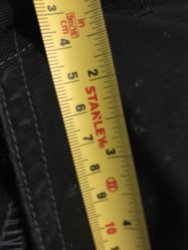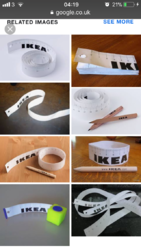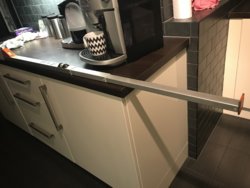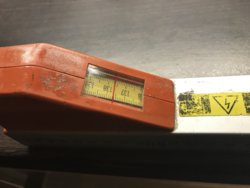Q
Qwerty
It seems that every day is a school day. Marc ( @3_fall ) and a few of us were discussing tape measures today (yes we really do find these things interesting!  ).
).
It seems that your trusty old tape measure may not be as trusty as you thought!!!
It’s something most tilers take for granted, but when you’re in the market for a new tape measure, did you know some are more accurate than others?
All professional tape measures must meet industry standards which set guidelines for accuracy and margin of error. How closely a tape meets the guidelines dictates how it will be classified. The EU Weights and Measures act categorises tape measures into three separate classes: I, II and III.
As an example let’s compare a class I with a class II tape. EU guidelines state a class I tape up to 2m in length must be accurate to within a margin of 0.3mm. Under the same guidelines a class II tape of the same length should be accurate to within 0.7mm.
What level of error can be expected?
EC tape measure accuracy tests are carried out at 20°C based on a pulling force of 50 Newtons for steel tapes and 20 Newtons for fibreglass equivalents. The following table should help you see the difference between Class 1 and Class 2 tapes.
-Blade Length(m)
Class I (mm)
Class II (mm)
2
± 0.3
± 0.7
3
± 0.4
± 0.9
5
± 0.6
± 1.3
8
± 0.9
± 1.9
10
± 1.1
± 2.3
15
± 1.6
± 3.3
20
± 2.1
± 4.3
25
± 2.6
± 5.3
30
± 3.1
± 6.3
50
± 5.1
± 10.3
100
± 10.1
± 20.3
0.3mm doesn’t sound like much but for some professions it’s the difference between success and failure – there are some jobs where there really is little margin for error and tiling certainly can be one of these professions where only the most precise measurements will do. This is when we could almost certainly do with a class 1 tape measure.
While most tape manufacturers specialise in producing multi-purpose class II (known as EC Class 2) tapes for a broad market there are a few who pride themselves on manufacturing class I, professional grade tape measures. Fisco and Advent class I tape measures are two of only a few manufacturers to produce high quality, accurate and value for money class 1 tapes. All Fisco and Advent class I tapes meet EU Weights and Measures standards.
Well there you have it.... next time you have a measure in your hand, just take a looksie to check if it is a class I, II or III (it's written on the tape steel and/ or on the casing). If it's a class III then you may want to invest in a new one!!!
It seems that your trusty old tape measure may not be as trusty as you thought!!!
It’s something most tilers take for granted, but when you’re in the market for a new tape measure, did you know some are more accurate than others?
All professional tape measures must meet industry standards which set guidelines for accuracy and margin of error. How closely a tape meets the guidelines dictates how it will be classified. The EU Weights and Measures act categorises tape measures into three separate classes: I, II and III.
As an example let’s compare a class I with a class II tape. EU guidelines state a class I tape up to 2m in length must be accurate to within a margin of 0.3mm. Under the same guidelines a class II tape of the same length should be accurate to within 0.7mm.
What level of error can be expected?
EC tape measure accuracy tests are carried out at 20°C based on a pulling force of 50 Newtons for steel tapes and 20 Newtons for fibreglass equivalents. The following table should help you see the difference between Class 1 and Class 2 tapes.
-Blade Length(m)
Class I (mm)
Class II (mm)
2
± 0.3
± 0.7
3
± 0.4
± 0.9
5
± 0.6
± 1.3
8
± 0.9
± 1.9
10
± 1.1
± 2.3
15
± 1.6
± 3.3
20
± 2.1
± 4.3
25
± 2.6
± 5.3
30
± 3.1
± 6.3
50
± 5.1
± 10.3
100
± 10.1
± 20.3
0.3mm doesn’t sound like much but for some professions it’s the difference between success and failure – there are some jobs where there really is little margin for error and tiling certainly can be one of these professions where only the most precise measurements will do. This is when we could almost certainly do with a class 1 tape measure.
While most tape manufacturers specialise in producing multi-purpose class II (known as EC Class 2) tapes for a broad market there are a few who pride themselves on manufacturing class I, professional grade tape measures. Fisco and Advent class I tape measures are two of only a few manufacturers to produce high quality, accurate and value for money class 1 tapes. All Fisco and Advent class I tapes meet EU Weights and Measures standards.
Well there you have it.... next time you have a measure in your hand, just take a looksie to check if it is a class I, II or III (it's written on the tape steel and/ or on the casing). If it's a class III then you may want to invest in a new one!!!





